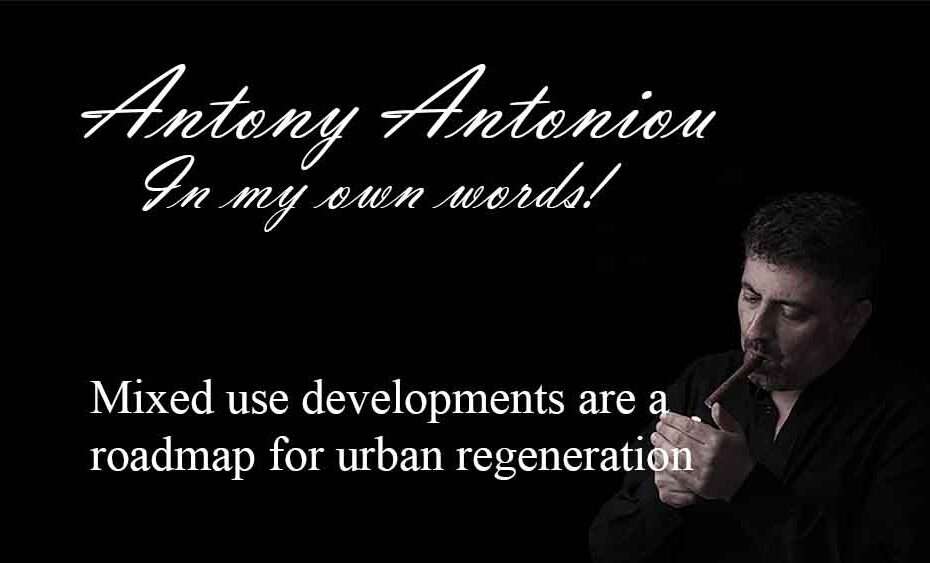Mixed use developments are a roadmap for urban regeneration
The Power of People-Oriented Cities: Embracing Sustainable and Livable Development
Introduction
In today’s world, where urbanization is on the rise, cities face significant challenges in ensuring sustainability and livability for their residents. In this regard, transit-oriented development (TOD) emerges as a promising solution to transform cities into people-oriented urban landscapes. The exclusive “People-oriented Cities” series, brought to you by TheCityFix and Insights, delves deep into this concept, exploring how cities can grow more sustainable and livable through TOD. By focusing on urban design techniques that prioritize people over cars, we can shape cities to foster economic growth, social cohesion, and an enhanced quality of life for all residents.
Mumbai: A Commuter’s Nightmare
Take Mumbai, India, for example, where the daily commute can be a true nightmare for its residents. The separation between the downtown area and residential core, a vast distance of ten miles, presents a significant transportation challenge. Poor public transport connectivity has resulted in Mumbaikars enduring the longest average daily commute in any Indian city, spending over 47 minutes each way. The fragmented urban development and lack of sustainable transit options have triggered a staggering 3,700% increase in car ownership over the past six decades, leading to congested roads and polluted air.
New York City: A Model for Sustainability
Contrast this with the landscape of New York City, where mixed-use development thrives, creating vibrant city blocks that house a diverse mix of restaurants, office buildings, residences, and shops. Such an urban design, known as “mixed-use development,” encourages the use of public transport, walking, and biking, efficiently connecting neighborhoods through sustainable means. As a result, the number of commuters relying on cars in New York City declined significantly, from 90% to 59%, between 2010 and 2011.
Sprawling Cities and Segregation: A Costly Disconnect
The rise of sprawling cities can be traced back to the proliferation of zoning at the beginning of the 20th century. This led to the growth of residential neighborhoods on the outskirts and suburbs, creating car-dependent commuter towns. Such urban sprawl has had adverse effects on city centers, giving way to shopping malls instead of bustling commercial streets and segregating the urban poor from the affluent. This trend is especially common in developing nations like Mexico, where single-family houses are scattered on the outskirts of cities, resulting in families spending up to 25% of their income on transportation. The environmental consequences are evident, as Mexico City’s greenhouse gas emissions have surged by up to 70%, and the city loses a staggering USD 2.5 billion each year in economic productivity.
Connected Communities for a Better Future
To combat these challenges, mixed-use development emerges as a potent solution to create inclusive and connected communities. In such areas, residents can access housing, restaurants, services, schools, cultural facilities, and parks within walking or cycling distance, reducing their dependence on private vehicles. An excellent example of this transformation can be seen in Mexico City’s Avenida Insurgentes, a major street that witnessed significant traffic congestion before the introduction of the city’s first bus rapid transit (BRT) system, Metrobús. The launch of Metrobús in 2005 replaced 100,000 daily car trips with sustainable transport, leading to reduced congestion and lower GHG emissions.
Benefits Beyond Mobility
In addition to improved mobility, mixed-use development fosters shared community spaces, such as plazas, parks, and sidewalks, which encourage social interaction and create a sense of belonging among residents. Studies show that neighborhoods with lower levels of car traffic have residents with three times as many friends and twice as many acquaintances compared to heavily trafficked areas.
Furthermore, mixed-use, public transit-friendly neighborhoods benefit local economies. By reducing the length and number of everyday trips, these areas save individuals money on transportation and eliminate the need for car ownership. Additionally, the increase in foot traffic resulting from mixed-use development supports local businesses, resulting in higher spending by pedestrians compared to car commuters.
The Way Forward: Growing Sustainable Cities
As the World Health Organization predicts that cities will house 70% of the world’s population by 2050, with 96% of this growth occurring in developing countries, the need for sustainable urban spaces becomes more urgent than ever. As current cities expand and new ones emerge, it is crucial for local leaders, urban planners, and citizens to prioritize sustainable, mixed-use development to reap the economic, social, and environmental benefits of people-oriented cities.
Conclusion
In conclusion, the path to sustainable and livable cities lies in transit-oriented development and mixed-use urban design. By placing people at the center of city planning, we can create communities that are economically vibrant, socially cohesive, and offer an enhanced quality of life for residents. As the world embraces the challenges of urbanization, the lessons from Mumbai and New York City highlight the transformative power of people-oriented cities for a brighter future.

